Sportfishing with ‘Flare’
Boats designed with Carolina Flare help bring up the big ones.
By Gordon ByrdWatch RV Hodge’s insider tour of an 84-foot custom sportfishing boat from Jarrett Bay Boatworks.
Standing in the hollowed space where a berth will soon be installed, RV Hodge expands his arms to demonstrate the size of the colossal sportfishing boat. Hodge is the foreman of the crew responsible for constructing the most breathtaking creations delivering out of Jarrett Bay Boatworks, served by Carteret-Craven Electric Cooperative. Its specialty is competitive sportfishing designs, especially those with the distinctive “Carolina Flare.”
Standing in front of a Jarrett Bay Boat is straining to the neck. The bottom of the boat, “the deadrise,” RV explains, “is V-shaped. Then the flam goes up the side in a tumblehome shape until it rises out in an exaggerated flare.”
[For those new to boat hull design, “flam” is a convex section, “flare” is concave, and a “tumblehome shape” describes a hull that grows narrower above the waterline.]
As you walk alongside the boat in dry-dock, the aggressive lines become more apparent. The enormous bow looks like it is already slicing through waves, like how a Ford Mustang looks like it’s speeding even sitting still. Once the twin, inboard engines are allowed to propel the offshore boat to the Gulf Stream, the boat’s shape enables a smooth, blistering sprint of up to 40 knots or more.
This is what the Carolina Flare was designed for. Its unique history was shaped at the cross-section of a geographical phenomenon, a burgeoning charter fishing industry and advancing technologies. This trifecta of independent, yet simultaneous occurrences provided the right time for a remarkable fishing development.
Deep sea access
Even the infamous Black Beard and his pirate crew took note of the geographical phenomenon. Black Beard’s hideout, Beaufort, where Jarrett Bay Boatworks is located, is situated on the mainland at the southernmost tip of the Outer Banks, one of the closest points to the Gulf Stream where the continental shelf plunges to depths 100 times the shallows just 30 miles in. This is where the Gulf Stream current rushes northward. Here, the big fish live.
It is in these conveniently located shores that North Carolina’s charter fishing industry was first hatched. According to Lawrence E. Babits, professor of maritime history and nautical archaeology at East Carolina University, the Carolina Flare may have been invented before the charter fishing industry developed. But, without a doubt, the charter fishing industry popularized the design, and Brady Lewis — who started building ships on Harkers Island in the 1920s — is the boat builder credited with the design used today.
Choppy waters splash up the flare and then are cast aside, keeping the captain, crew and anglers comfortable and dry. The large bow and slicing hull create a relatively smooth ride as the boat speeds toward deeper water. It is in these deep, Gulf Stream waters where the Carolina Flare really shines.
Built for speed
Materials for building boats have changed since the Vikings of Scandinavia or Lapitas of the Pacific Islands took to the open seas in wooden vessels. Although the Carolina Flare is often still made with wood, it is strengthened and sealed with carbon-fiber saturated in epoxy resin. Fishing technology has advanced as well. And the power that propels these boats, in particular, has increased in profound ways.
“I remember when 18-knots was a fast boat. Now, you’ve got to go at least 40-knots to be considered fast,” RV reflects.
RV explains the natural limits to speed. “Weight, horsepower and safety limits speed,” he says, “and Jarrett Bay overbuilds for safety.”
New building materials were employed to save 40,000 pounds in weight to give one of their latest creations, a monstrous 90-foot behemoth, the fighting edge in competitive fishing tournaments. The massive boat screams from port toward the best fishing grounds with diesel engines so powerful they can match the speed of some much smaller and lighter vessels.
Now the reel work begins.
Fish raisers
Out there in the thousand-fathom waters, even the most elegantly designed boat would not be any good unless it raised fish. A “fish raiser” is a competitive boat that somehow convinces large predator gamefish to strike at the fisherman’s bait.
Veteran charter fishing Captain Ernie Doshier, a resident of Ocracoke Island and member of Tideland EMC, explains the mystery of a fish raiser. There is something about the hum of the engine, the wake from boat, the churning of the props through the water; the big fish are curious to come up and find out more.
But those curious fish are confounded by the decoy school of rigs presented by the outriggers, which dip different lures or baits off the side of the boat to simulate many tasty snacks. This is called trolling, and it continues until, in the deep blue water of the Gulf Stream, the streaking shadow of a billfish — perhaps a sailfish or marlin — is seen below.
Once those big fish begin to rise from the depths, the outriggers and rods work together to tease up a bite.
Several lines trail the boat. Some lower on the deck trail a short distance. The boat’s mate manages these rods, while the captain watches the higher, longer lines trailing in the distance.
“Fish on!” is the universally engaging call that means the objective of the Carolina Flare has been achieved — and the fight to reel in a prize-winning fish ensues.
If the hooked fish is ready to engage, the angler will climb in the fighting chair and, for an endurance battle, harness up to conserve energy.
The big fish will often jump into the air and then plunge down, trying to drag the boat with it. In the Gulf Stream, visibility can be up to 50 or even 60 feet down. The fish’s every move, thrash, pull, dive and jump is visible from the bridge.
Pulling in the big one is a thrilling experience for anyone, but it doesn’t take landing a trophy fish to make a memorable trip.
“If your clients have had a good and enjoyable day on the water, that’s the bottom line,” Ernie says. “If you happen to get a shot at a billfish — and then are lucky enough to catch one — that’s a bonus.”
Editor’s note: Jarrett Bay Boatworks Co-founder and President Randy Ramsey is currently Chair of the UNC Board of Governors; his relationship with the article’s subject matter, as well as the author’s employer, did not affect reporting.-
"Reel" fish stories
-
Share this story:

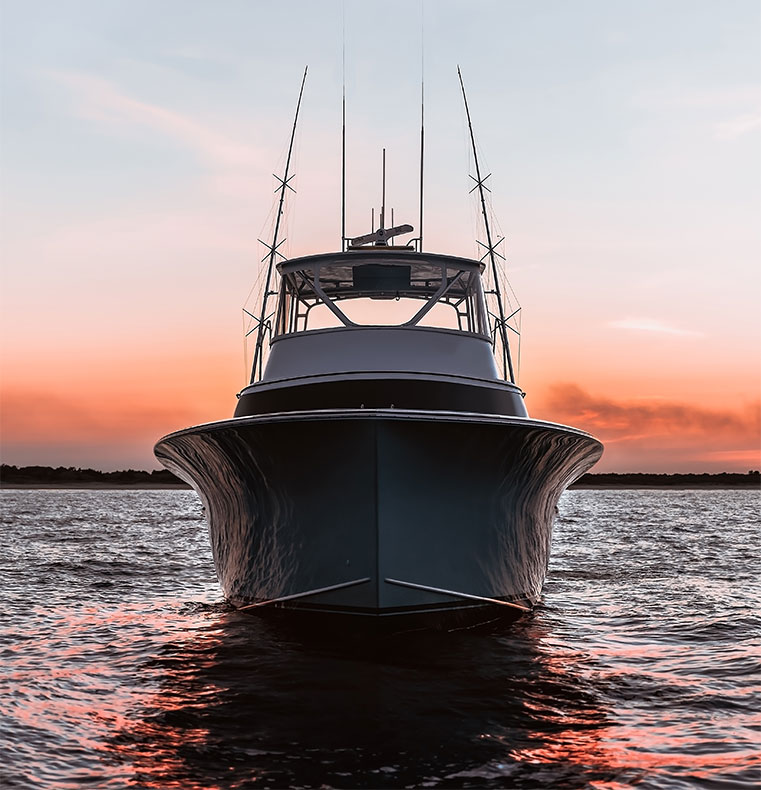
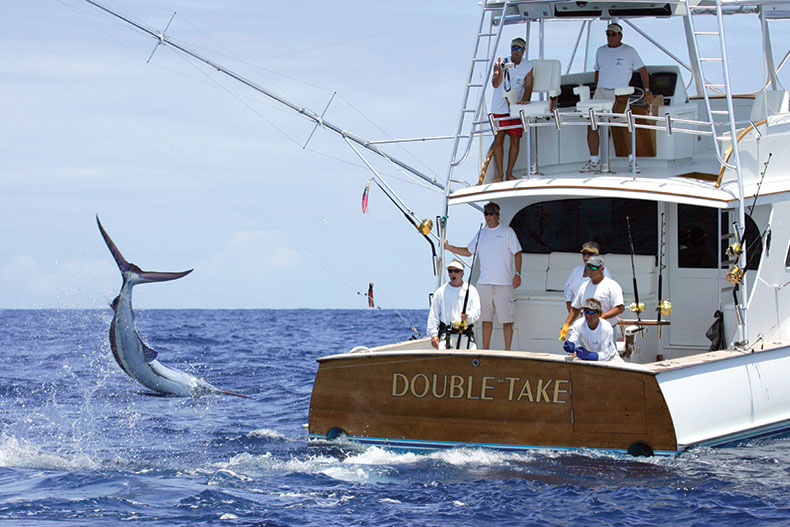
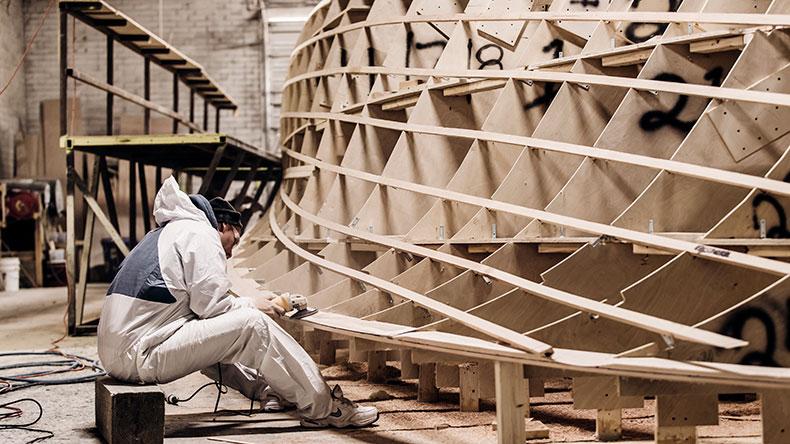

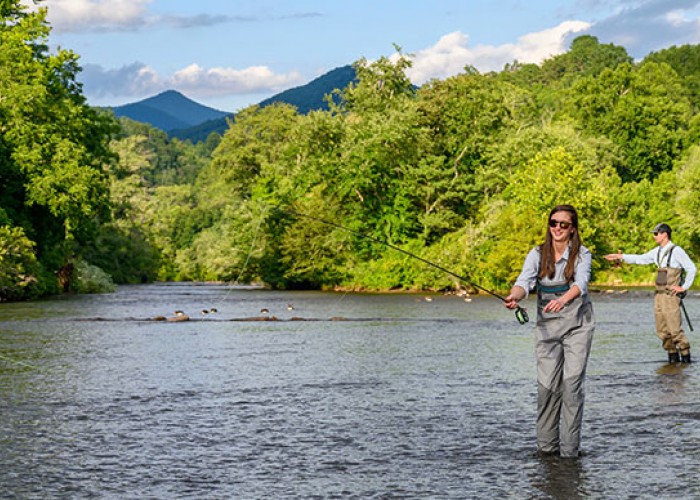
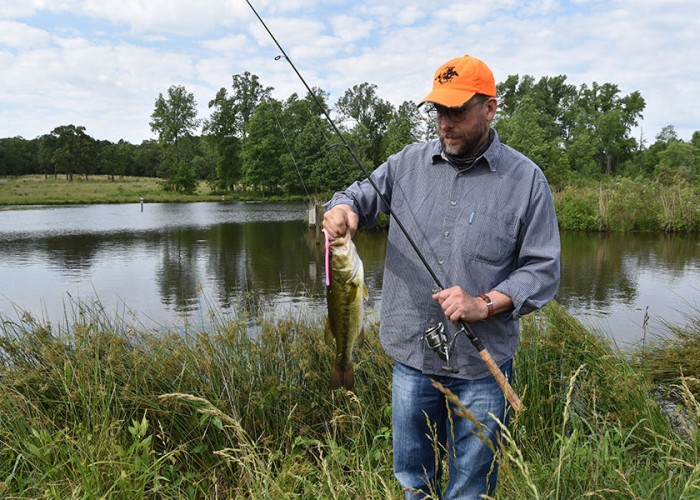
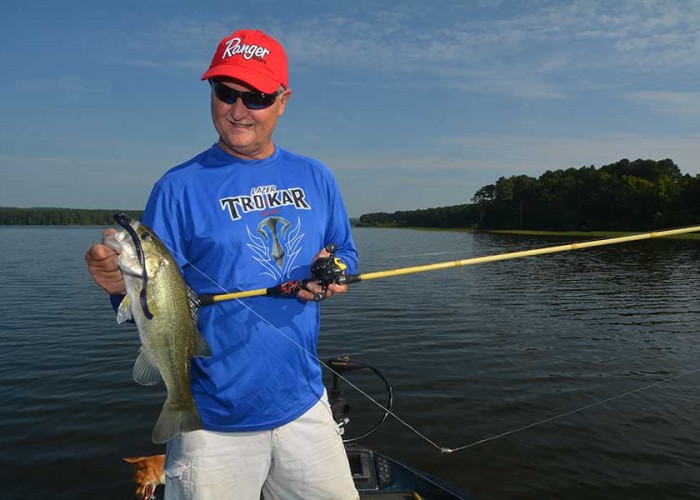



Comments (1)
Gerard F Russell |
August 10, 2021 |
reply